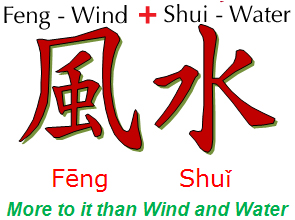Feng Shui is an ancient Chinese practice that focuses on harmonizing individuals with their environment. The term “feng shui” translates to “wind” and “water,” symbolizing the flow of energy or Qi (pronounced “chee”) in the natural world. It is based on the belief that the arrangement and orientation of objects and spaces can affect the balance and flow of energy, thereby influencing one’s well-being, prosperity, and overall quality of life.

Feng Shui encompasses various principles and techniques that aim to create a harmonious and balanced environment. These principles consider factors such as the arrangement of furniture, color schemes, lighting, natural elements, and the overall layout of a space. By optimizing the energy flow in a space, practitioners believe that they can enhance positive energy and minimize negative influences.

Some key concepts in Feng Shui include:
- Bagua: The bagua is a fundamental tool in Feng Shui, represented by an octagonal grid that maps different areas of life, such as health, wealth, relationships, career, and more. It is used to analyze and balance the energy in specific areas of a space or a whole building.
- Five Elements: Feng Shui incorporates the five elements of wood, fire, earth, metal, and water. Each element is associated with specific qualities and colors, and their interaction is believed to influence the energy flow within a space.
- Yin and Yang: This concept represents the duality and balance of opposing forces. Yin represents passive, receptive, and feminine energy, while Yang represents active, dynamic, and masculine energy. Achieving a balance between Yin and Yang is considered important in Feng Shui.
- Chi/Qi: Chi or Qi refers to the life force energy that flows through all living things. In Feng Shui, the goal is to enhance the flow of positive chi and minimize obstacles or stagnant energy that can lead to imbalances or blockages.

Feng Shui is commonly applied to various aspects of life, including homes, offices, gardens, and even city planning. The practice is aimed at creating an environment that supports well-being, promotes positive energy, and aligns with the specific goals and needs of the individuals inhabiting the space.
![]()







Leave a Reply